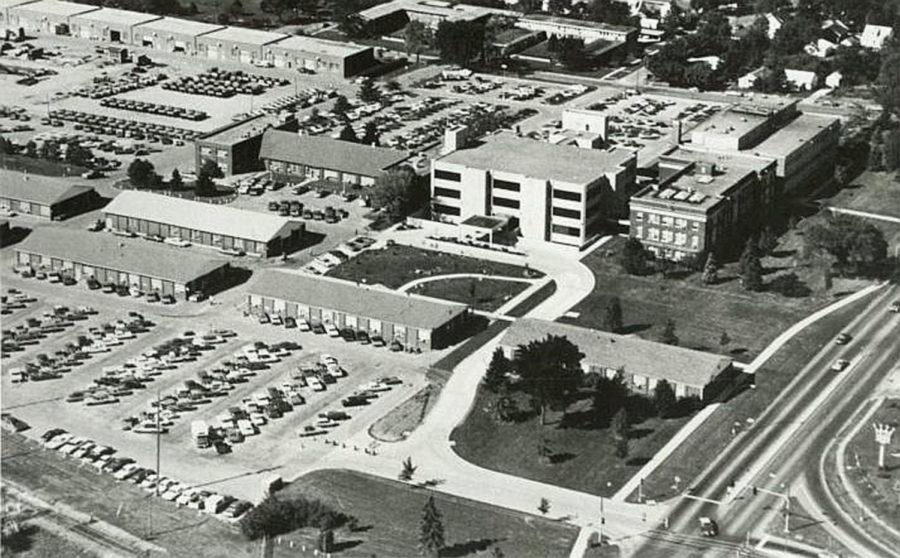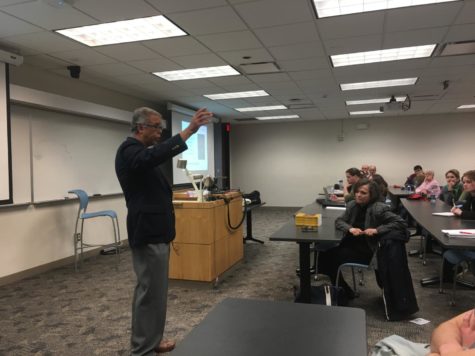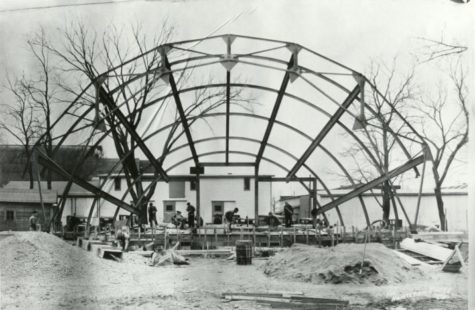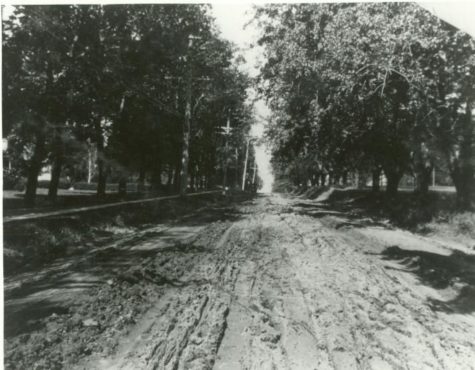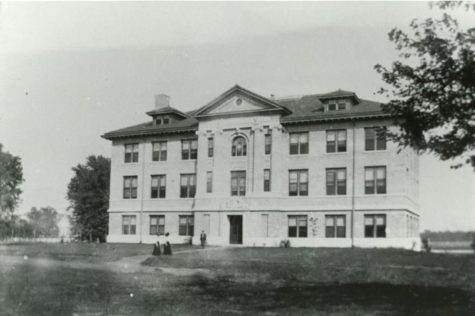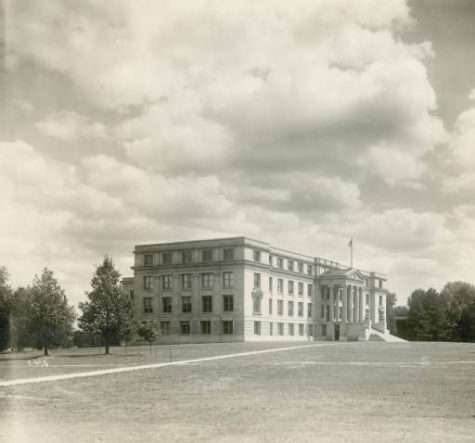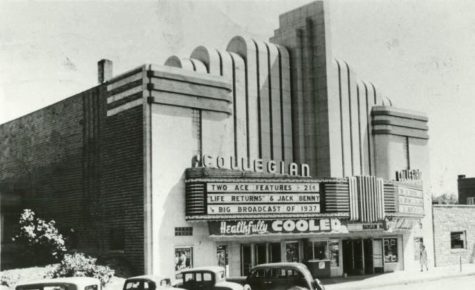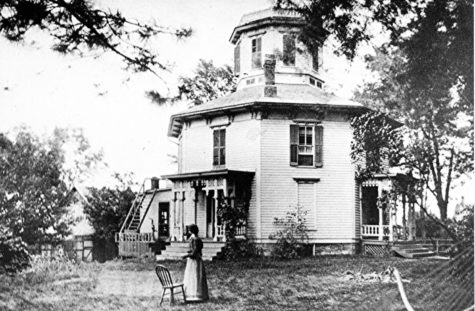ISU dean begins Iowa DOT
Courtesy of Ames Historical Society
The Iowa Department of Transportation in 1972 with its new administration building. The Iowa DOT began as the Iowa Highway Commission and was first directed by Anson Marston, dean of the division of engineering at Iowa State College of Agriculture and Mechanic Arts, in 1904.
August 6, 2014
Editor’s note: In celebration of the 150th anniversary of our city, the Daily will highlight prominent figures, places and events in Ames’ history each week.
The Iowa Highway Commission, which would become the Iowa Department of Transportation, began in 1904 in Ames as part of Iowa State College of Agriculture and Mechanic Arts.
The commission’s initial purpose was to act as an advisory agent to local municipalities.
The first director of the Iowa Highway Commission was Anson Marston, dean of the division of engineering at Iowa State, who designed the Marston Water Tower, began the building of Engineering Hall — which became Marston Hall — and supervised the building of the Campanile and the restoration of Lake LaVerne.
“Marston’s main area of research was in road construction, culverts and sewer systems, compression and pressure tests and load distributions,” according to University Archives on the ISU library website.
Marston also developed a theory used to compute backfill loads on pipes and wrote more than 200 publications on engineering, according to University Archives
Iowa State created the Marston Medal in 1938 in honor of Marston. The medal is given to recognize outstanding alumni of the College of Engineering.
“The commission was to conduct public highway demonstrations, disseminate information to county supervisors, formulate standards for highway repair and construction, investigate the road problems of Iowa and record and report progress to the governor each fiscal year,” according to the Iowa DOT.
According to the Iowa DOT’s website, the highway commission was productive but hindered by a lack of funds, receiving $7,000 every two years. The commission tested road materials and built experimental sections of road.
The Iowa Highway Commission became a state administered organization — separate from Iowa State — on April 9, 1913. Soon after the change, it hired more employees and reorganized departments to better serve the state of Iowa.
As the commission continued to adapt to the changing needs of state highways, it “slowly became an integral part of state and federal legislative initiatives, gaining a national reputation for excellence,” according to the Iowa DOT.
In 1969, Governor Robert Ray began to change the Iowa Highway Commission through the Task Force on Modernization of Iowa’s Transportation System and a transportation study by the Office of Planning and Programming.
In 1974, the Iowa General Assembly created the Iowa DOT. The legislature also created the Iowa Transportation Commission, the seven members of which are appointed by the governor.
Members of the commission are in charge of all major investment policy decisions and no more than four of them can be from the same party.

